Task Management#
The Task Management feature within ConverSight’s AI Workbench provides users with a user-friendly interface, offering a centralized hub to efficiently monitor and manage all created and registered tasks. This intuitive platform grants easy access to a comprehensive list of registered tasks organized neatly into different libraries, simplifying task management for increased productivity. Users gain a comprehensive overview of tasks they have created or have access to, presented in a well-organized tabular format. This streamlined approach allows for seamless task management on a single platform, eliminating the need for maintaining multiple notebooks. Additionally, Task Management facilitates effortless updating of task details and offers the convenience of version control. Through task promotion, users can adjust the visibility level of tasks, with options including platform organization and user levels, ensuring appropriate access and availability.
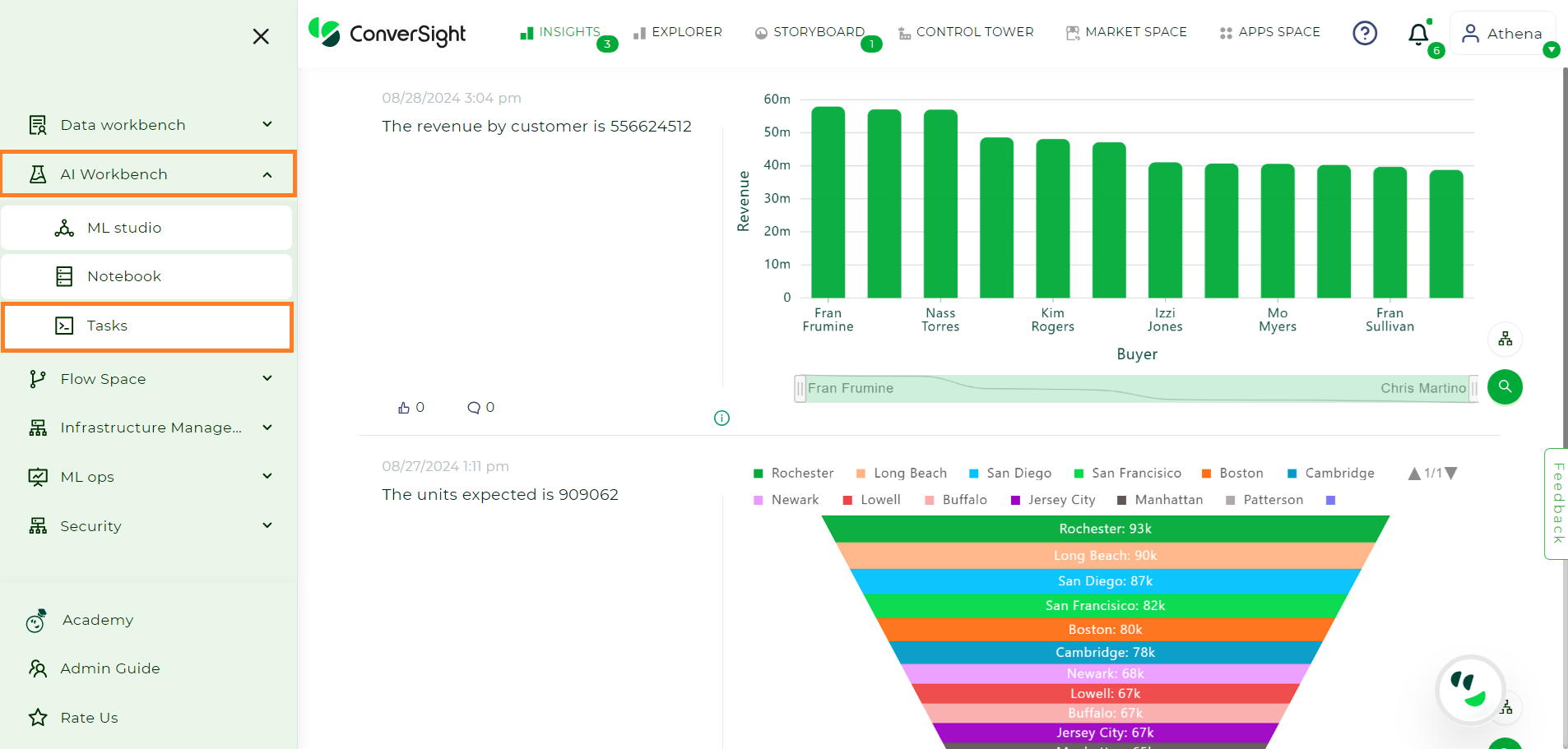
Tasks#
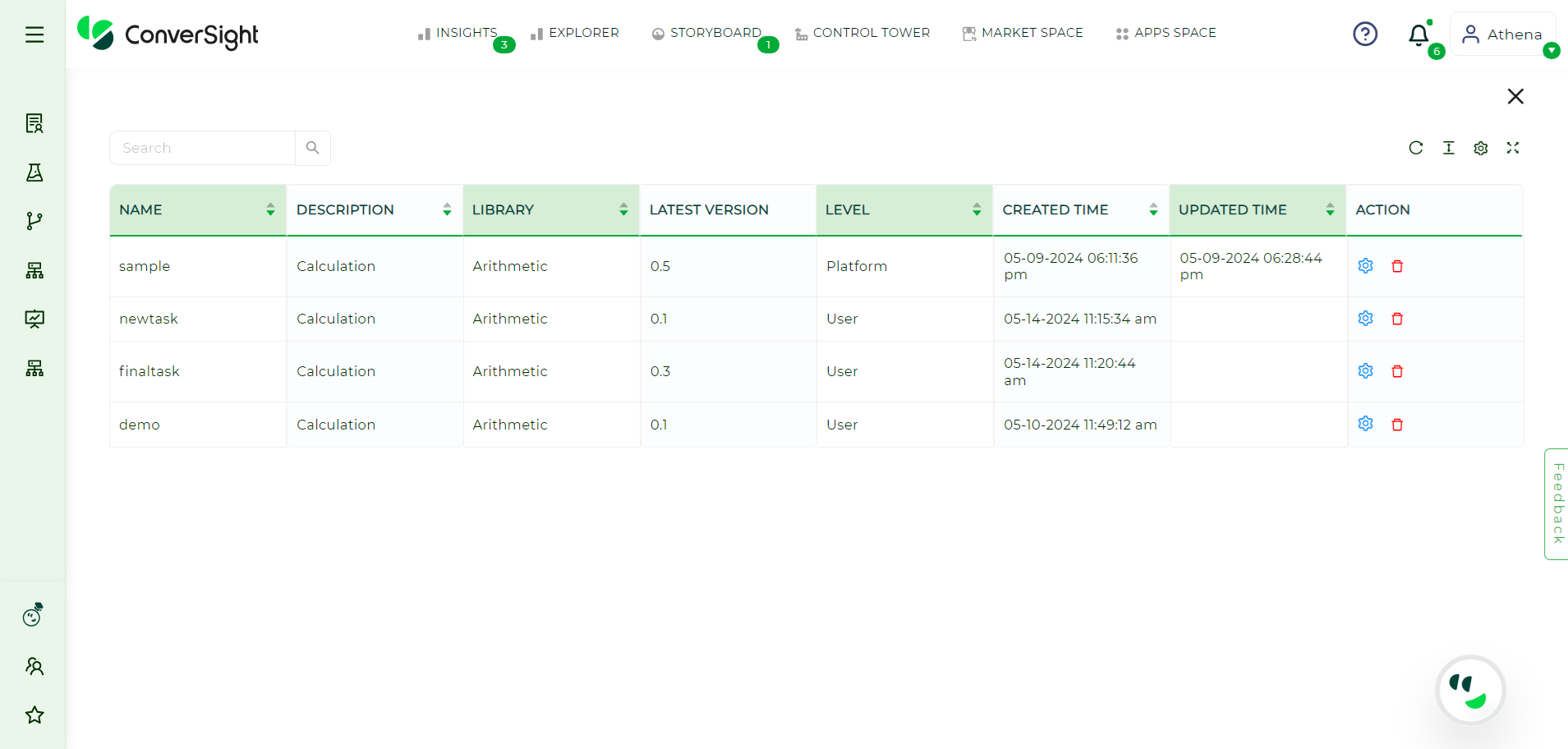
Task Management#
The Task Management page provides a detailed overview of various fields related to each task, making it easier to manage them efficiently. These fields are as follows:
Argument |
Description |
|---|---|
Name |
The task name gives a quick insight into what the task is about and how it fits into the overall project. It’s a short but descriptive title that makes it easy to recognize the task. |
Description |
A description provides clarity and guides others to a better understanding of the task. It includes detailed information about what the task entails, its objectives and any other relevant details that could help others understand it better. |
Library |
A library is an aggregation of tasks based on common grouping or similar functionalities. |
Latest Version |
The initial version of a task is marked as 0.1 upon creation, while subsequent updates result in an incremented version number such as 0.2, 0.3 and so on, each time the task is saved. This helps to keep track of different versions of the task and facilitates version control. |
Level |
There are three levels to which a task can be promoted: User Level Organization Level and Platform Level. |
Created Time |
The created time feature shows the time at which the task was created. |
Updated Time |
The updated time indicates the time of the latest task update. It helps to track the latest changes made to the task. |
Action |
The Action column contains manage versions and delete options. Users can manage different versions of the task and delete any unnecessary ones. |
Delete
When a user selects a particular task and opts to delete it, all versions associated with that task will be removed. To delete a task, click on the ![]() icon located in the Action column.
icon located in the Action column.
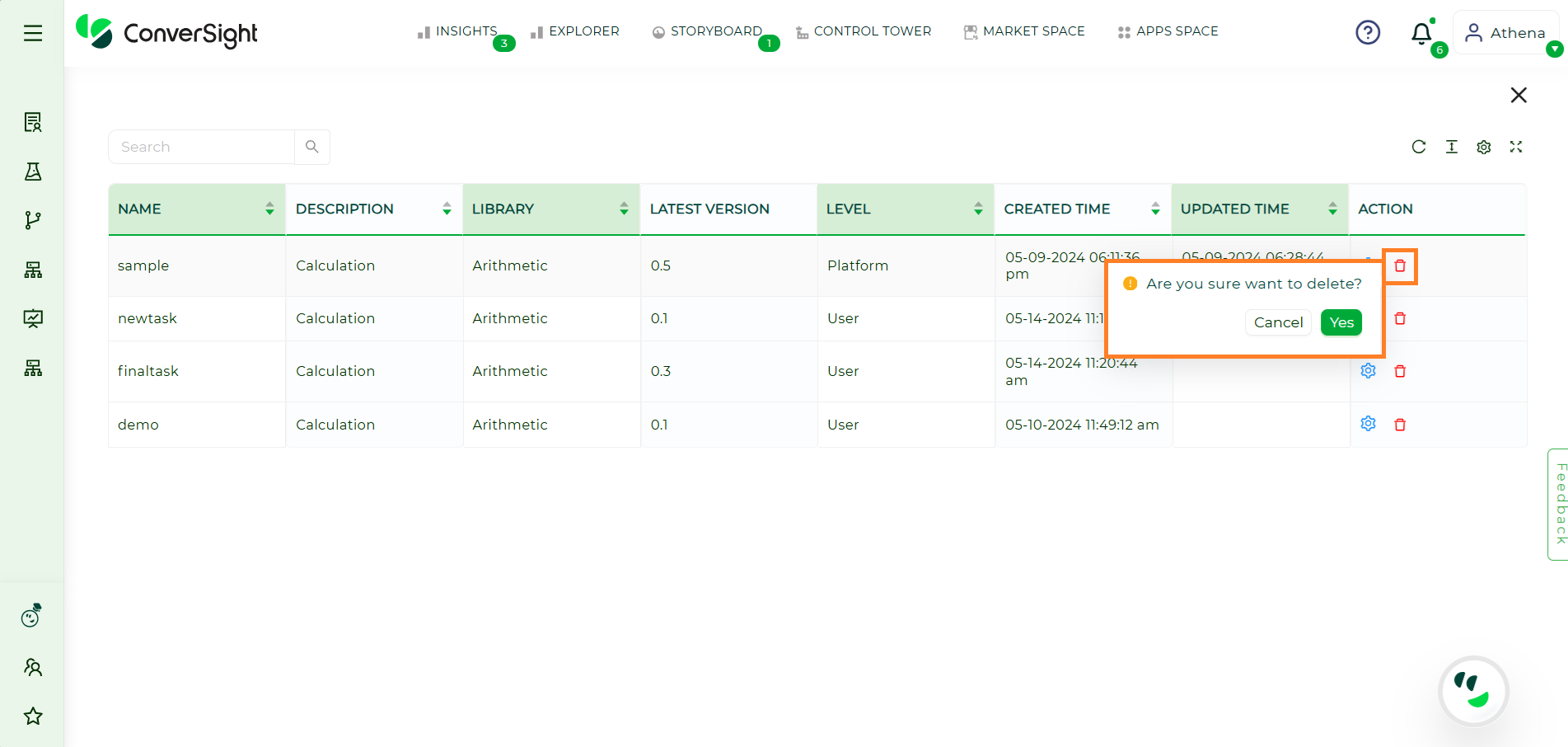
Deleting a Task#
Manage Versions#
To manage task versions, users can access the ![]() icon within the Action Menu of the desired task and select Manage Versions. This section displays the task’s version, promotion level, creation and modification times and actions for each task.
icon within the Action Menu of the desired task and select Manage Versions. This section displays the task’s version, promotion level, creation and modification times and actions for each task.
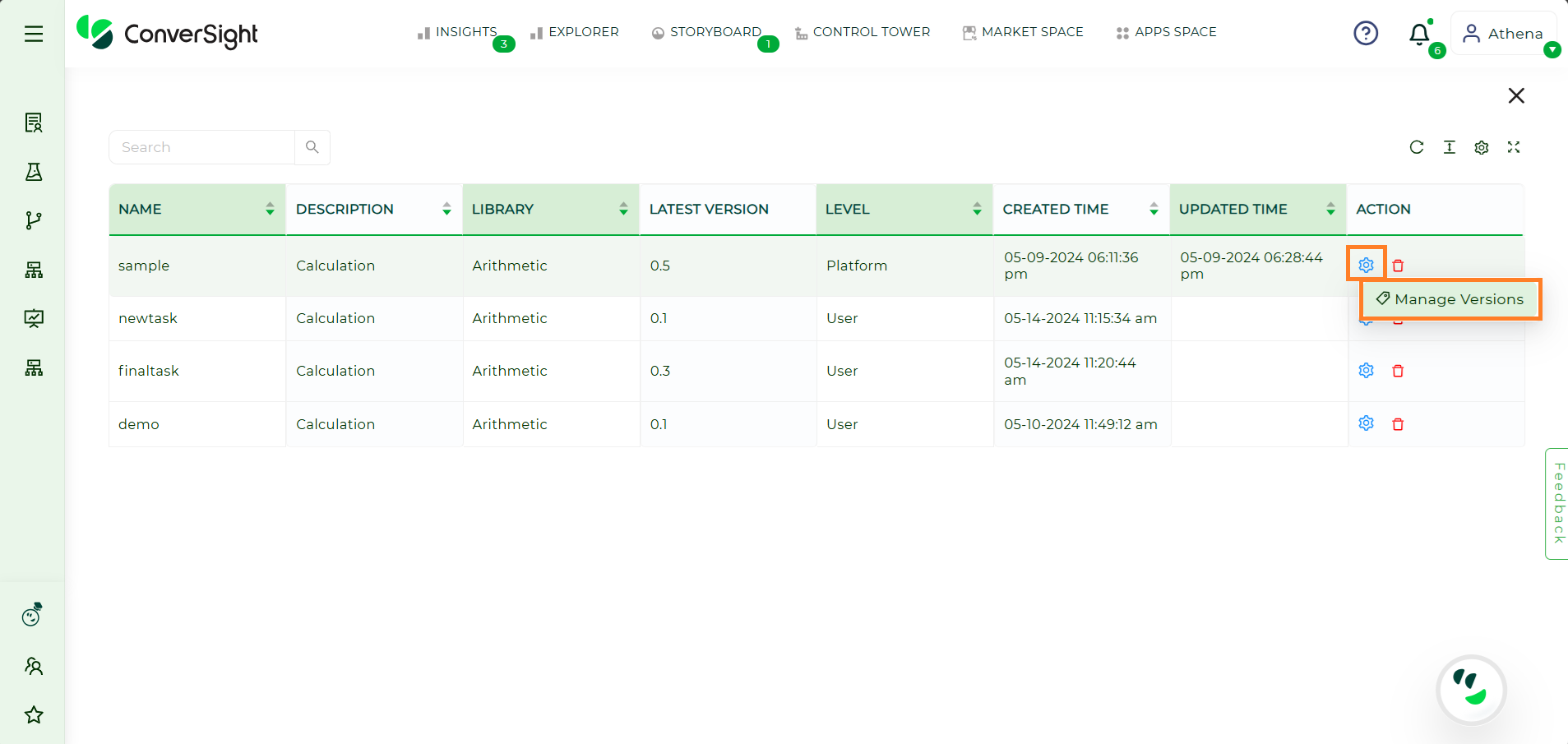
Manage Versions#
Run a Task#
Users can choose to manually trigger the execution of any version of their created task via the User Interface by selecting the  icon within the Action column linked to the desired task version. This feature simplifies task execution by eliminating the requirement to manually code and execute tasks through a notebook each time.
icon within the Action column linked to the desired task version. This feature simplifies task execution by eliminating the requirement to manually code and execute tasks through a notebook each time.
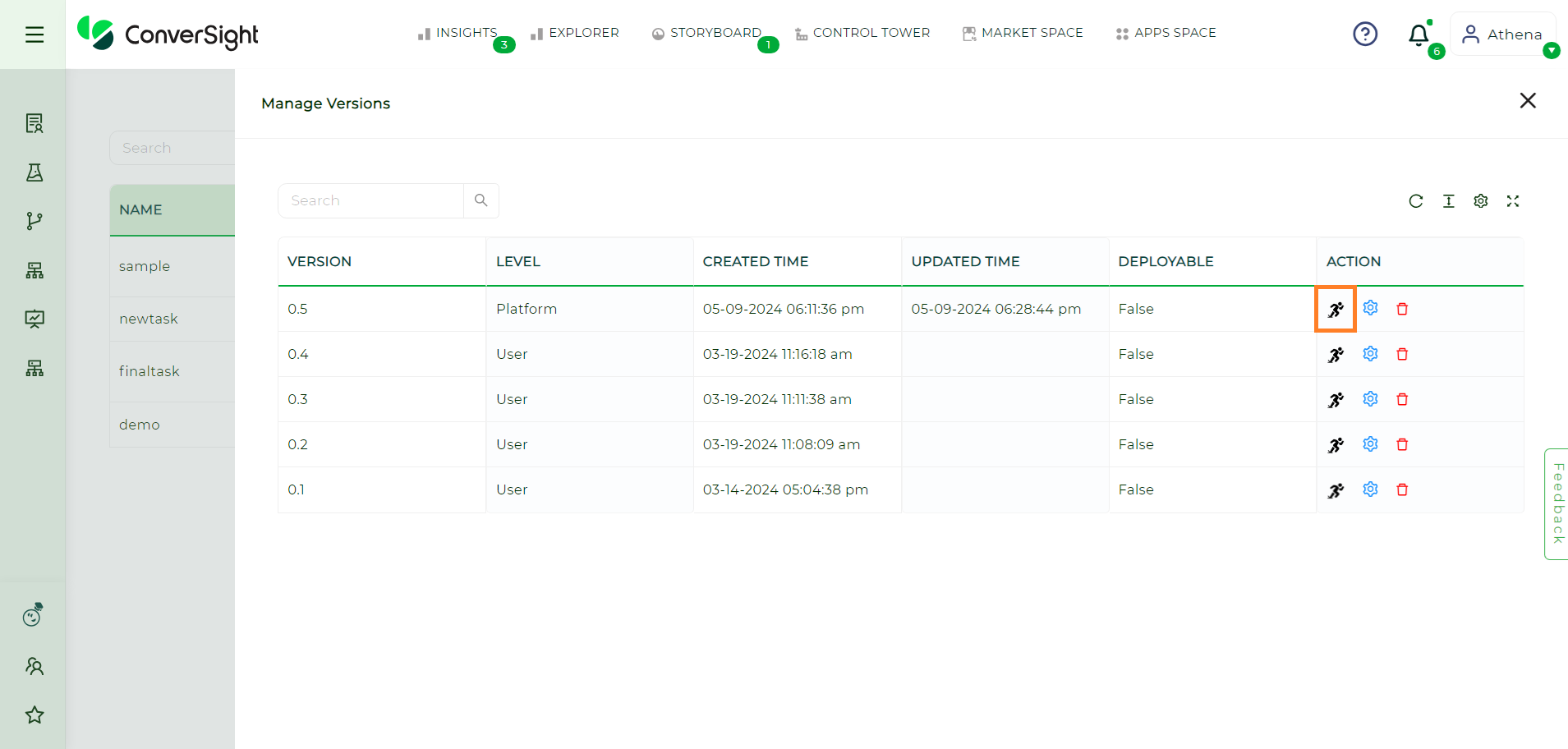
Run a Task#
Upon clicking the  icon, users need to provide the necessary input arguments for the task if default values were not assigned during task creation. Afterward, they should click Submit to start the execution process.
icon, users need to provide the necessary input arguments for the task if default values were not assigned during task creation. Afterward, they should click Submit to start the execution process.
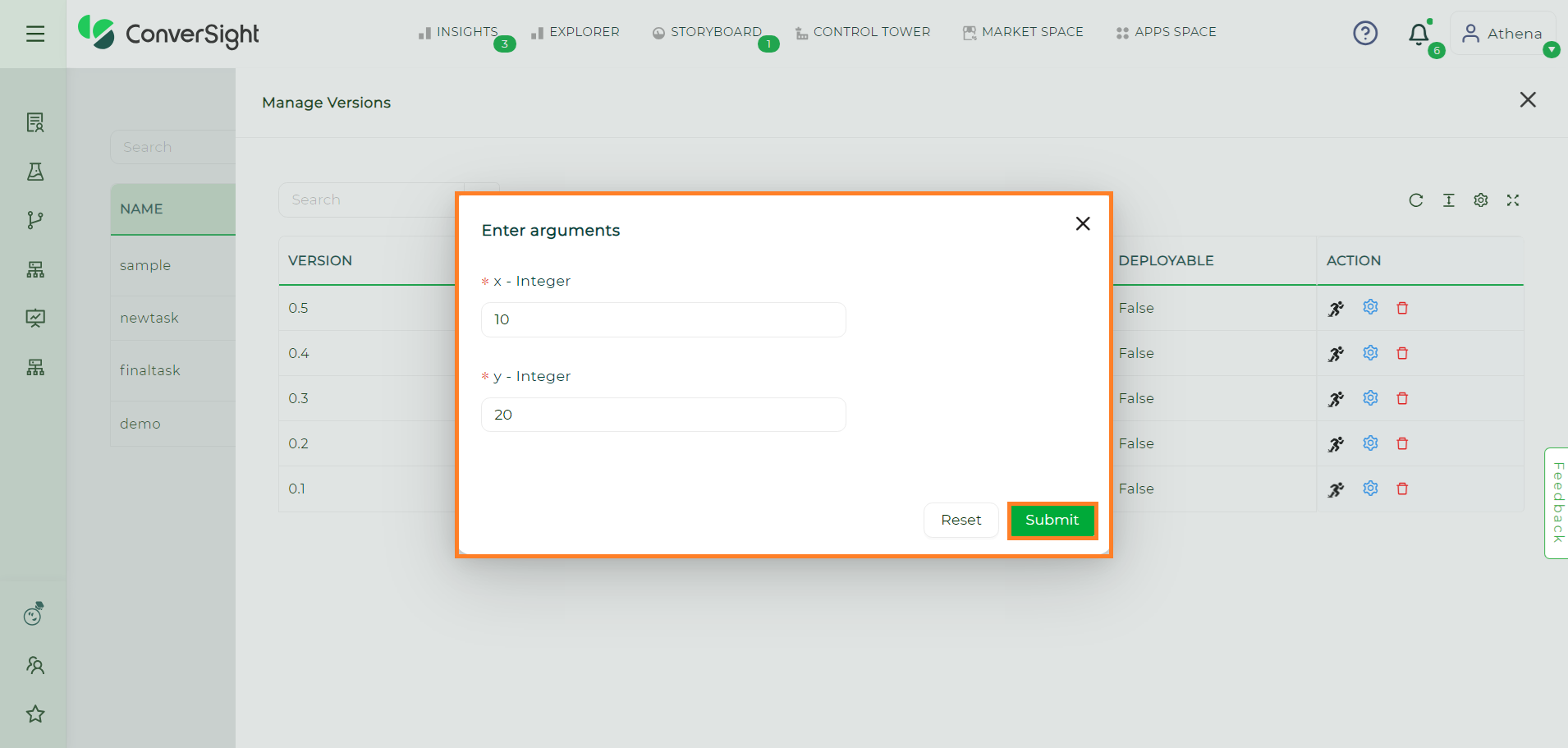
Run a Task without Default Values#
By default, tasks with default arguments will execute using those preset values. However, users have the option to modify these default values if they wish to run the task with custom parameters.
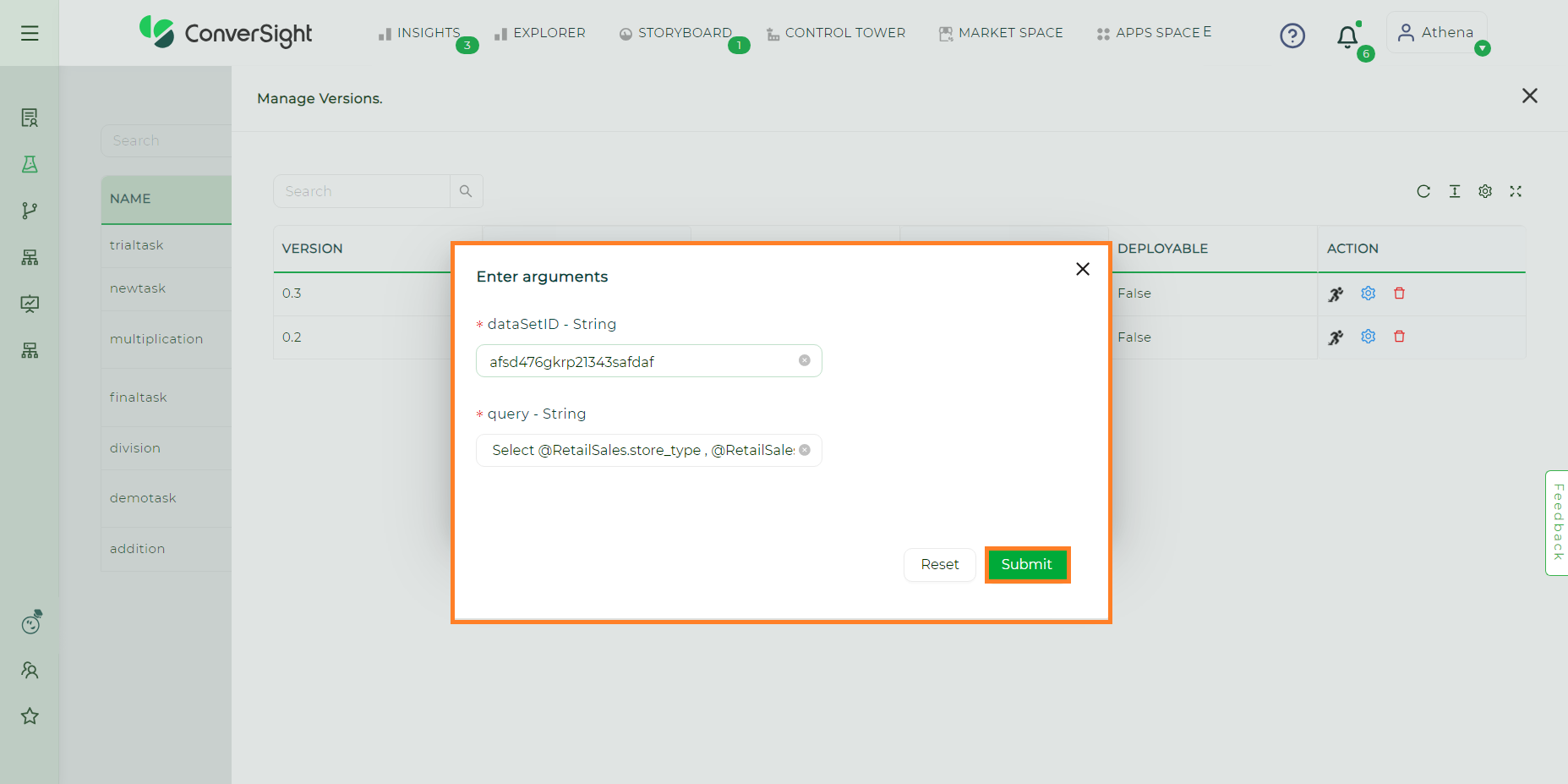
Run a Task with Default Values#
Delete a Version of Task#
The ![]() option within the Manage Versions tab of the selected task permits users to remove a specific version of the task.
option within the Manage Versions tab of the selected task permits users to remove a specific version of the task.
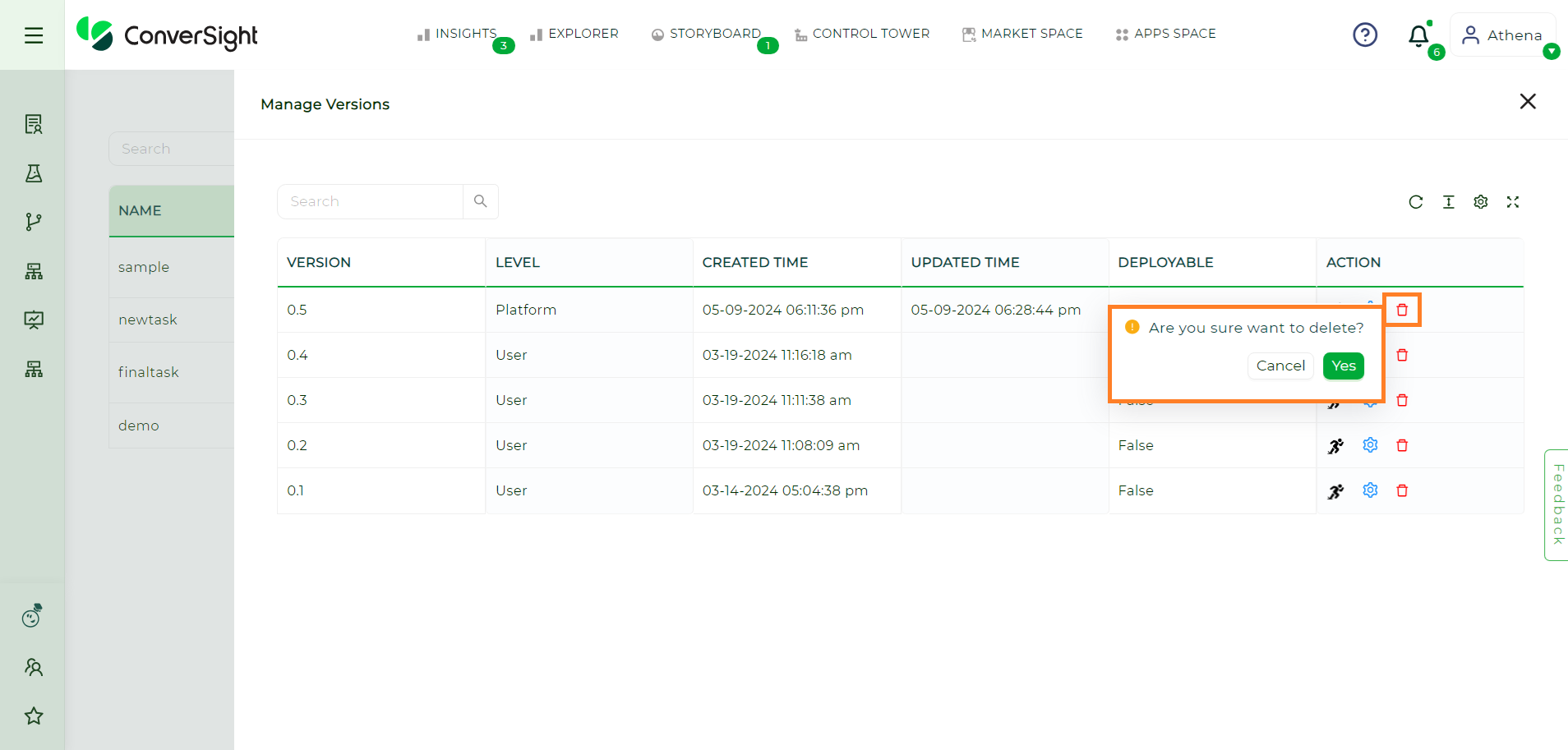
Delete Version of a Task#
Users can conveniently access a range of features by simply clicking on the ![]() icon located in the Action column of the Manage Versions tab. These features encompass accessing task details, promoting tasks, viewing code and monitoring task run status.
icon located in the Action column of the Manage Versions tab. These features encompass accessing task details, promoting tasks, viewing code and monitoring task run status.
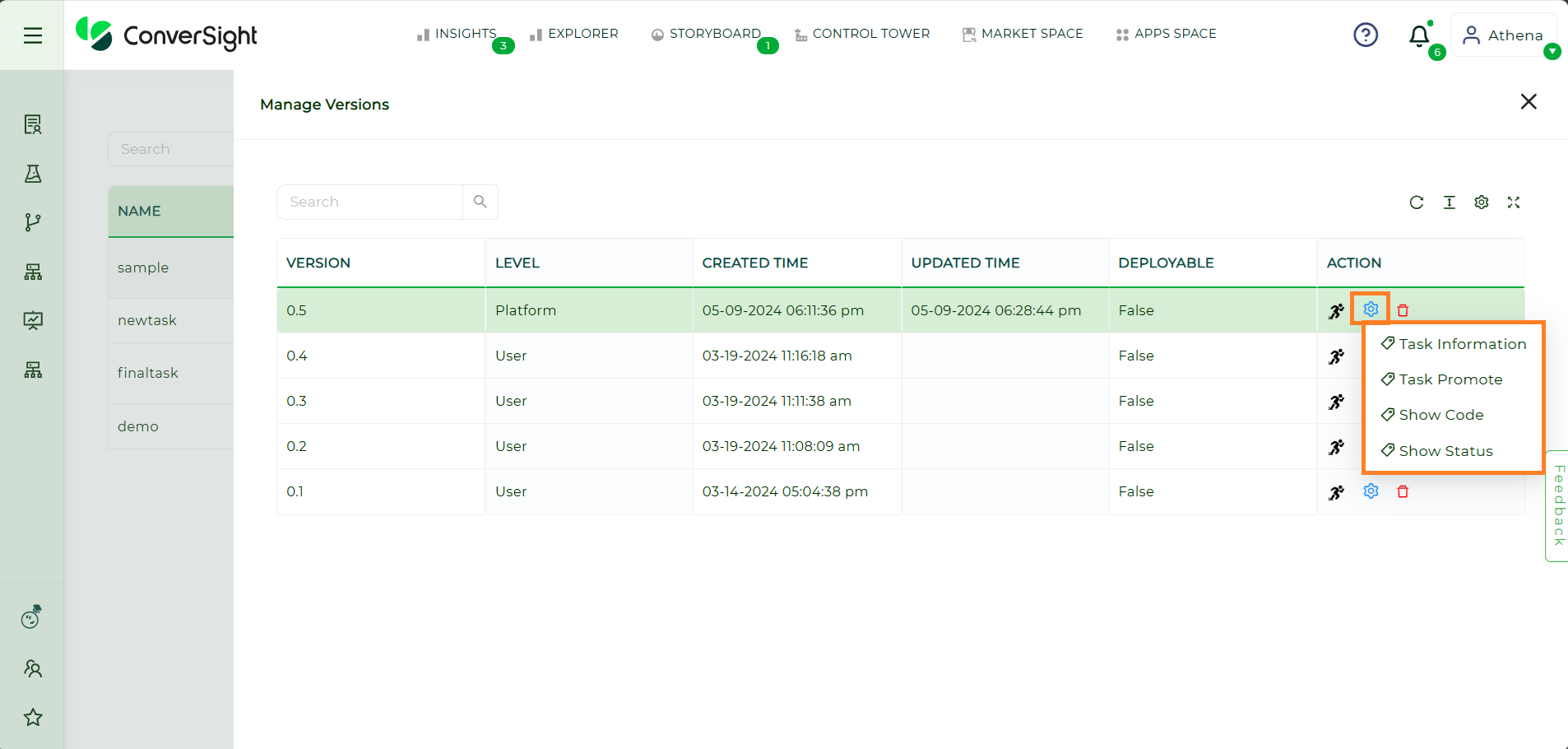
Manage Versions Tab#
Task Information#
The Task Information page provides a complete overview of the selected task’s details. These details include:
Field |
Description |
|---|---|
Input Arguments |
This feature shows the input parameters that were specified when the task was created. |
Data Type |
Shows the data type of the input arguments. |
Default Value |
Displays the default values of the input arguments, if any were specified during the creation of the task. |
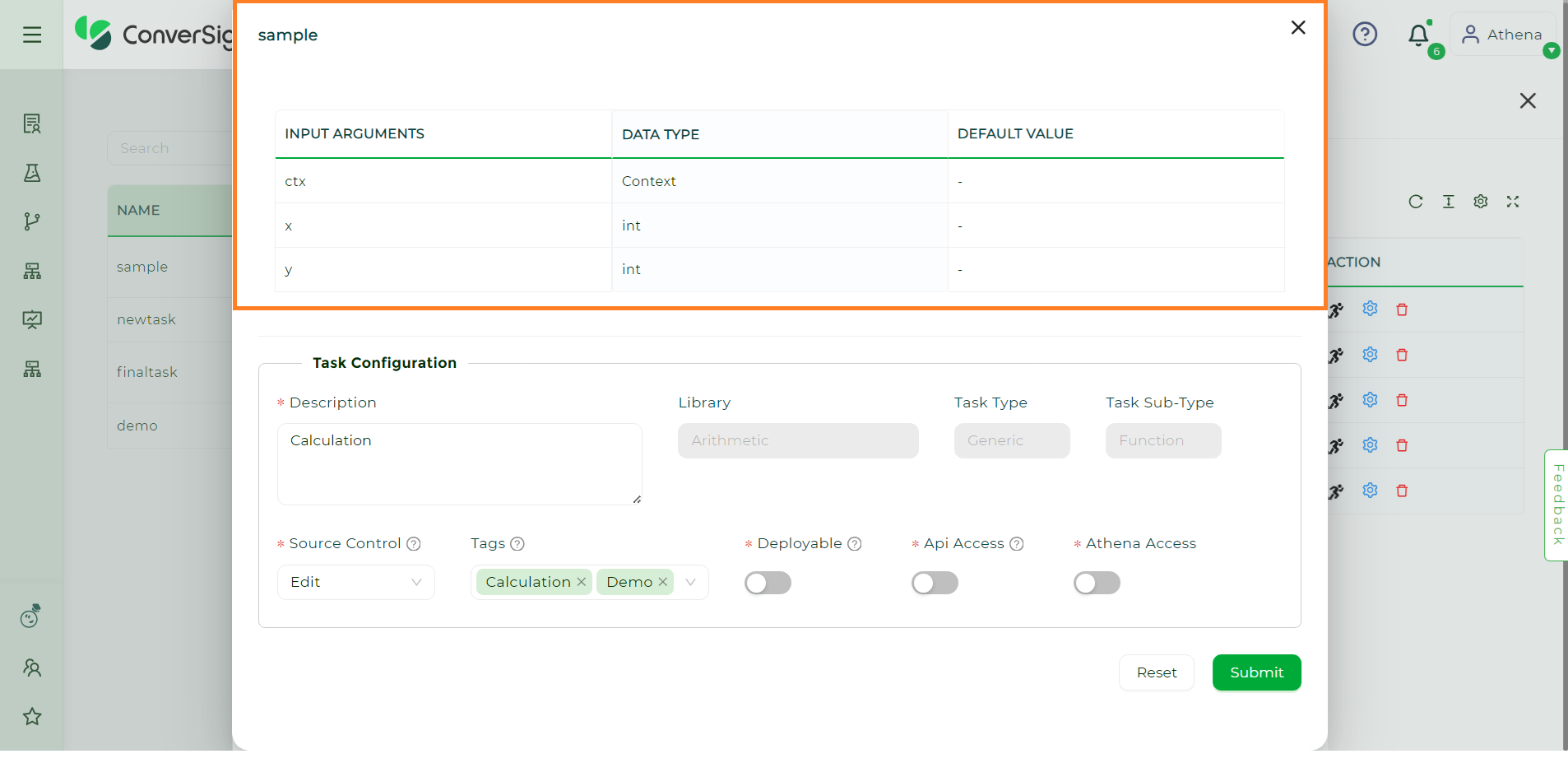
Task Information#
Task Configuration#
Field |
Description |
|---|---|
Description |
Textual explanation that provides context, details or information about the Task. |
Library |
Displays the library name of the task. |
Task Type |
Displays whether the task is generic or UI. |
Task Sub - Type |
Two types of tasks are available: function and class. If a task consists solely of one function, its subtype will be displayed as Function. Similarly, if a task includes two or more functions, its subtype will be displayed as Class. |
Source Control |
Displays the access level of the task. |
Tags |
Tags can be added to meticulously organize and categorize tasks for easy navigation and retrieval. |
Deployable |
Activating the Deployable toggle enhances performance and is suitable for tasks that require substantial time or have extended execution periods. |
API Access |
Activating this toggle will allow users to execute the task through APIs. |
Athena Access |
This toggle is for internal purposes. |
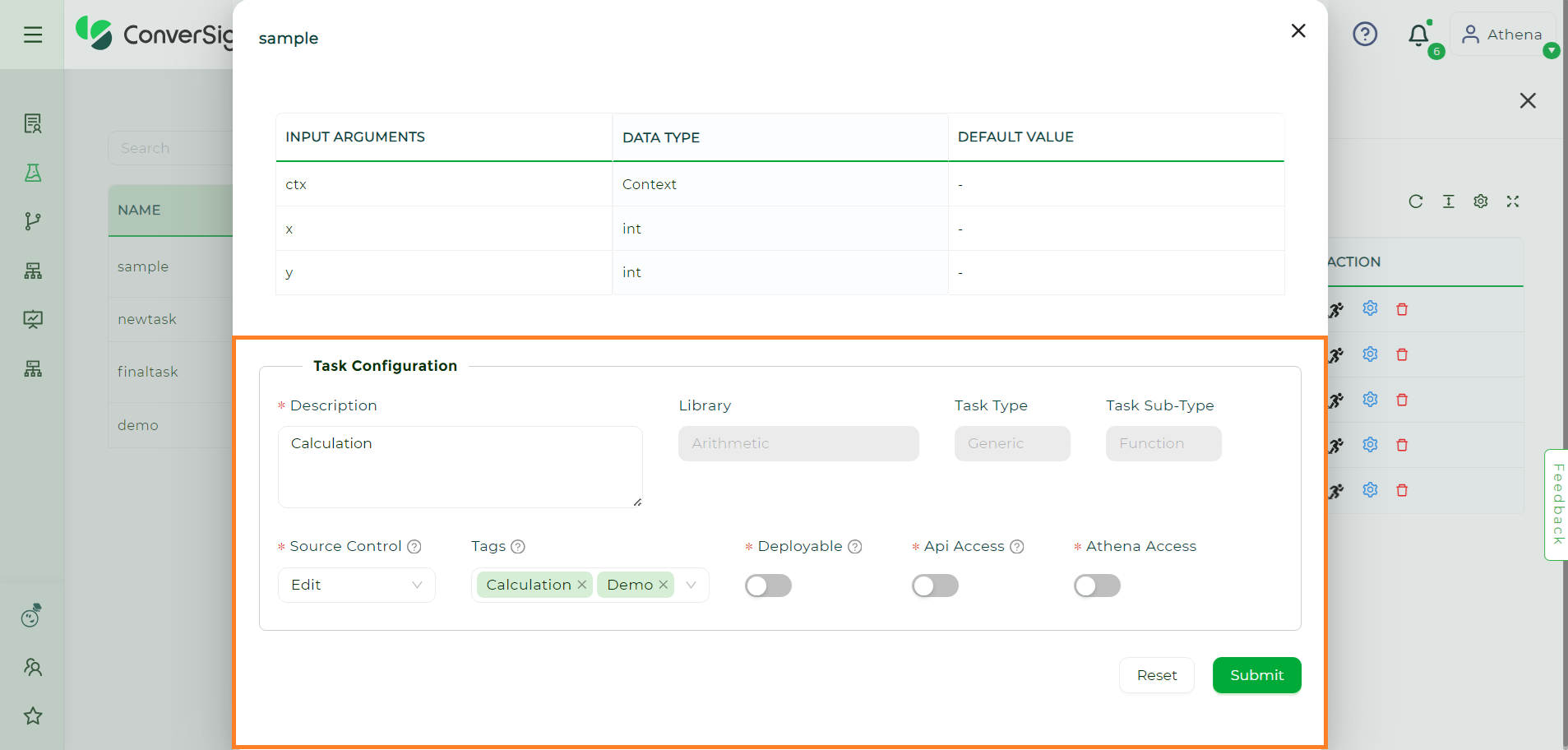
Task Configuration#
Task Promotion#
Through task promotion, users can adjust the visibility level of a task, with options such as user, platform and organization.
Platform Level: Promoting a task to the platform level makes it accessible to all platform users.
Organization Level: Promotion to organization level makes the task available to users within that specific organization.
User Level: Task promotion at the user level ensures availability exclusively to that particular user.
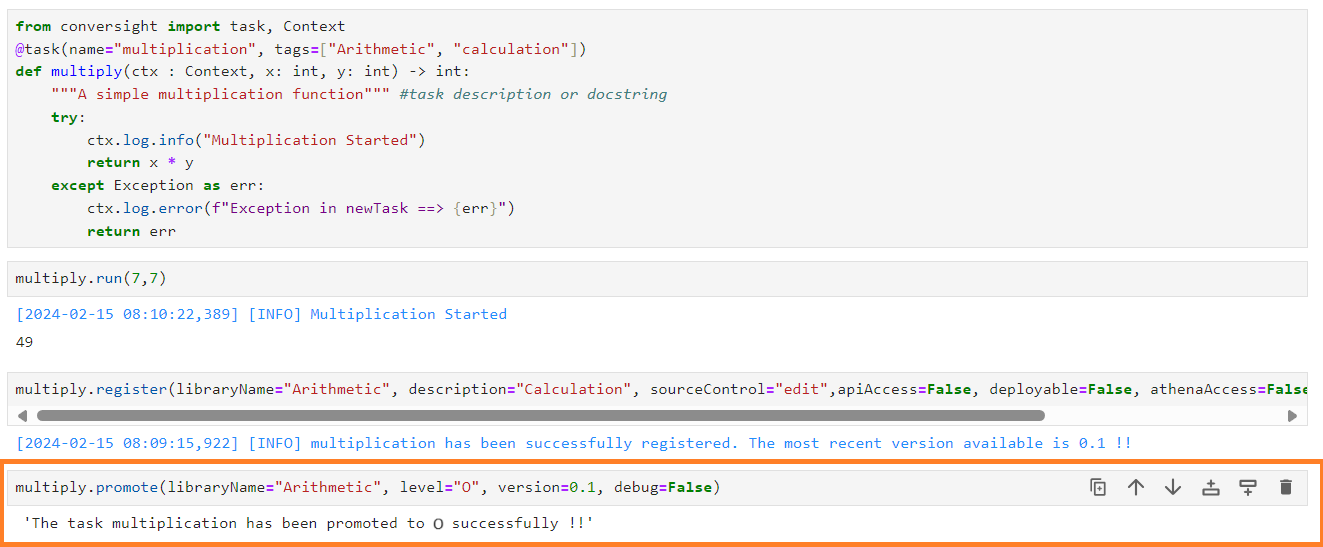
Task Promote#
Show Code#
The Show Code feature reveals the code associated with the task, depending on the access permissions set during task creation. Users can assign one of three access levels to the task:
View: Allows users to only view the code.
Edit: Enables users to view and modify the code as needed.
No Access: Prevents users from viewing or editing the code.
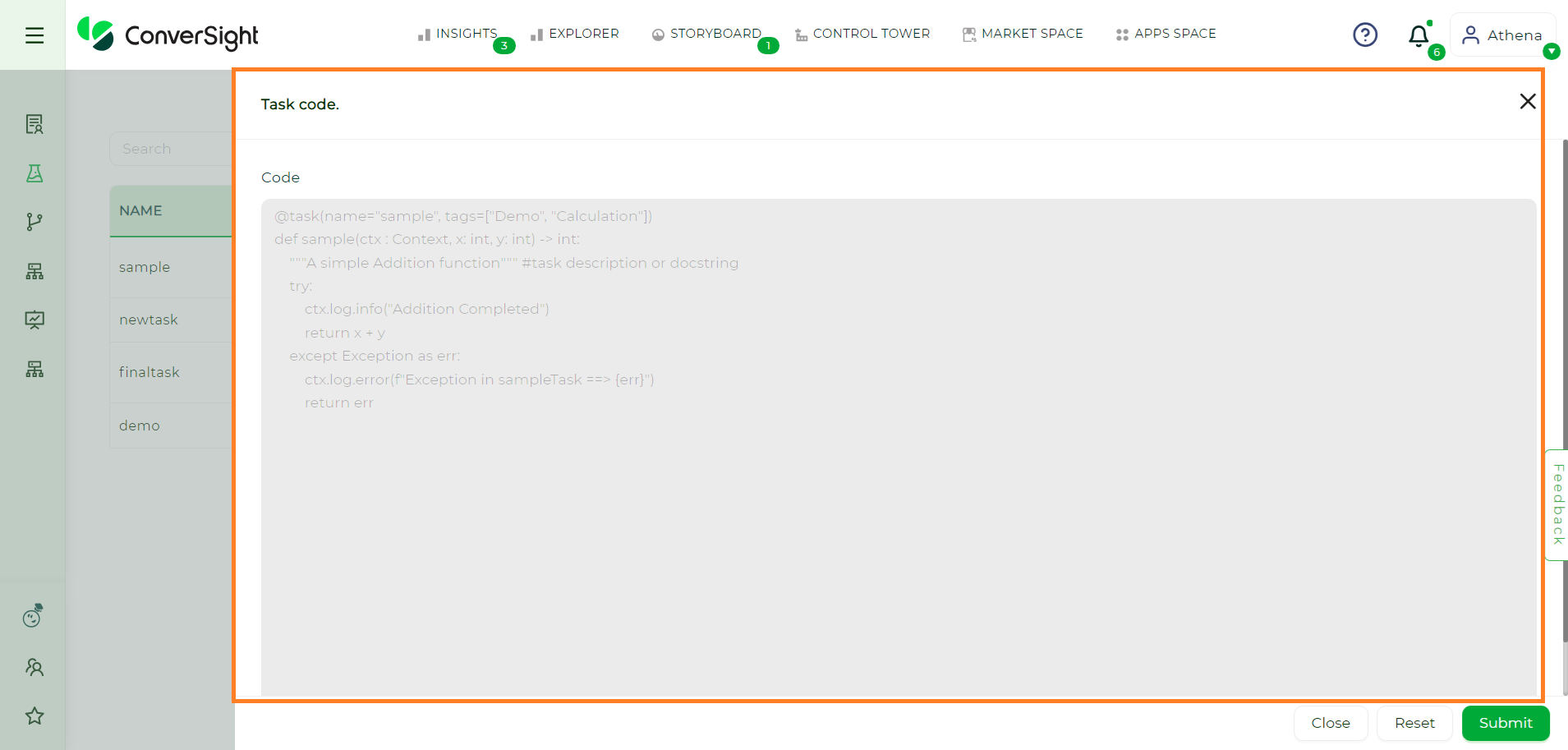
Show Code#
Show Status#
The Show Status feature allows users to view the Task Run Status of the selected version of the task in a well-organized tabular view.
Column |
Description |
|---|---|
Task Name |
Displays the name of the task. |
Version |
Displays the version of the task. |
Run Type |
The run type indicates the execution method, distinguishing between manual or scheduled tasks. Only manual execution, termed On Demand, is permitted. |
Deployable |
When Deployable is true, it indicates that the executed task is long-running or complex. Conversely, when it is false, it indicates that simple tasks are executed. |
Status |
Shows the status of the task execution. |
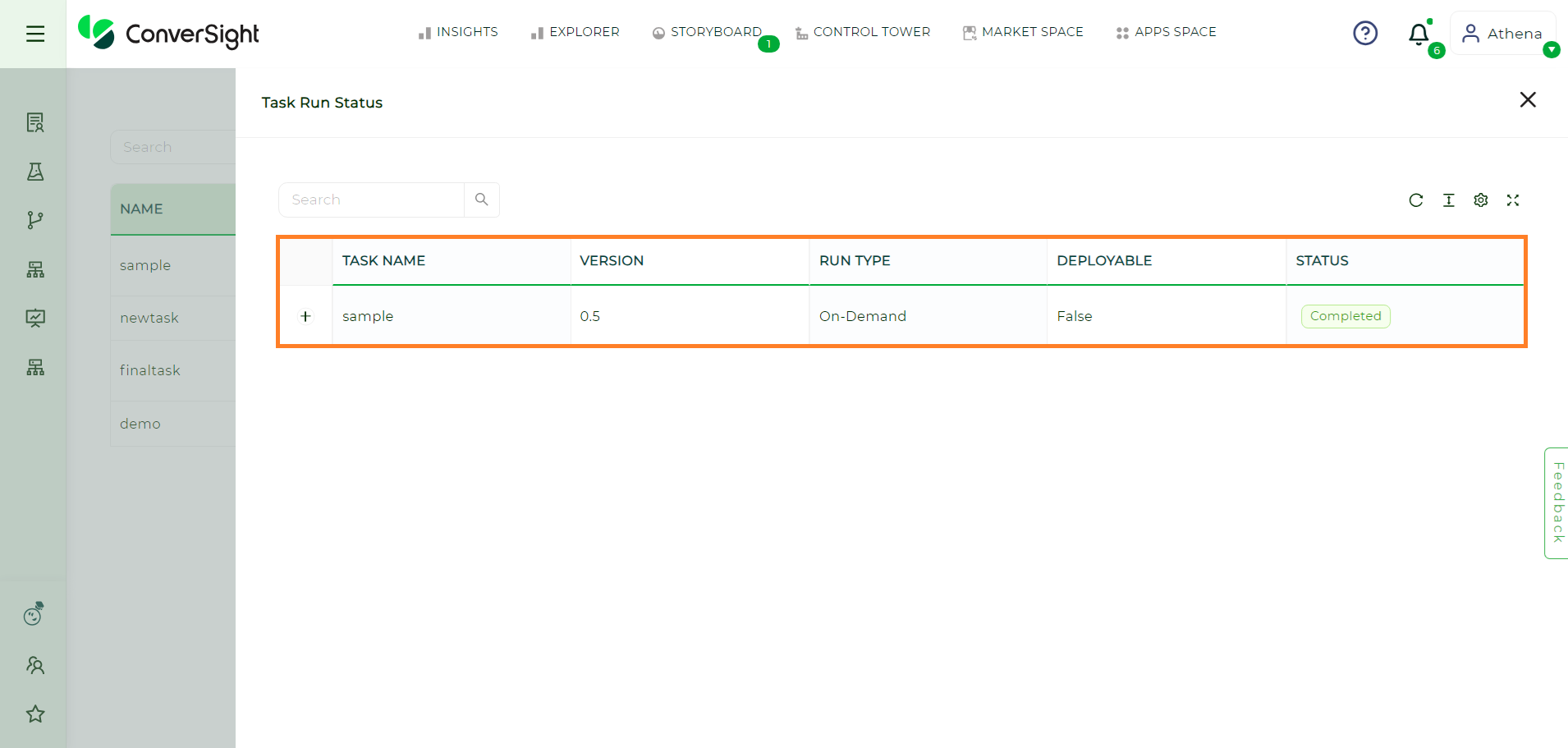
Task Run Status#
Different States in Task Run Status
Status |
Description |
|---|---|
Running |
This indicates that the task execution is in progress. |
Failed |
The status transitions to Failed if the task encounters execution issues, with details accessible by hovering over the status. |
Crashed |
This status indicates that an exception has occurred while task execution. |
Completed |
After a successful execution, the status transitions to the Completed state, indicating the task has been executed successfully. |
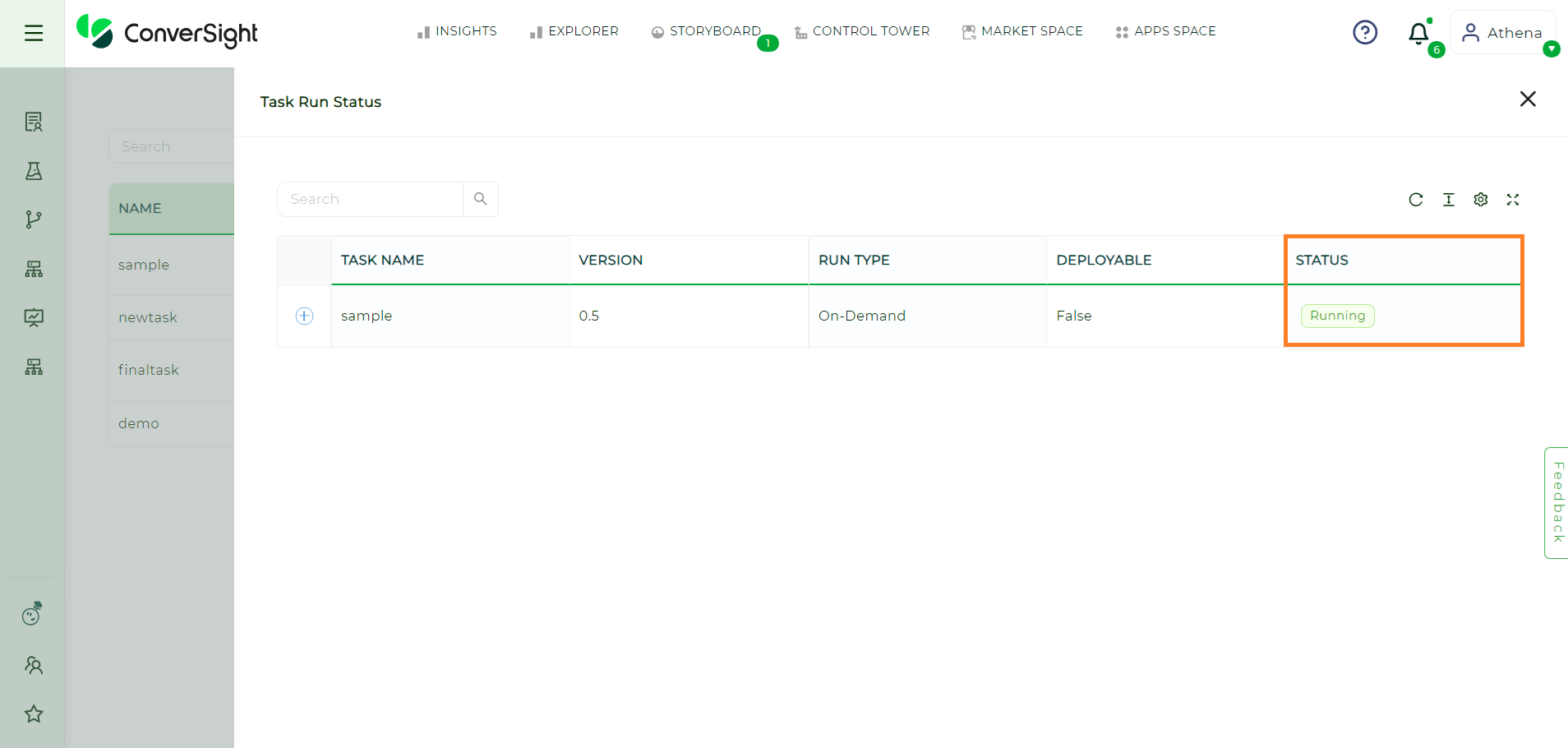
Status#
To access the log messages of the task, simply click on the Plus icon.
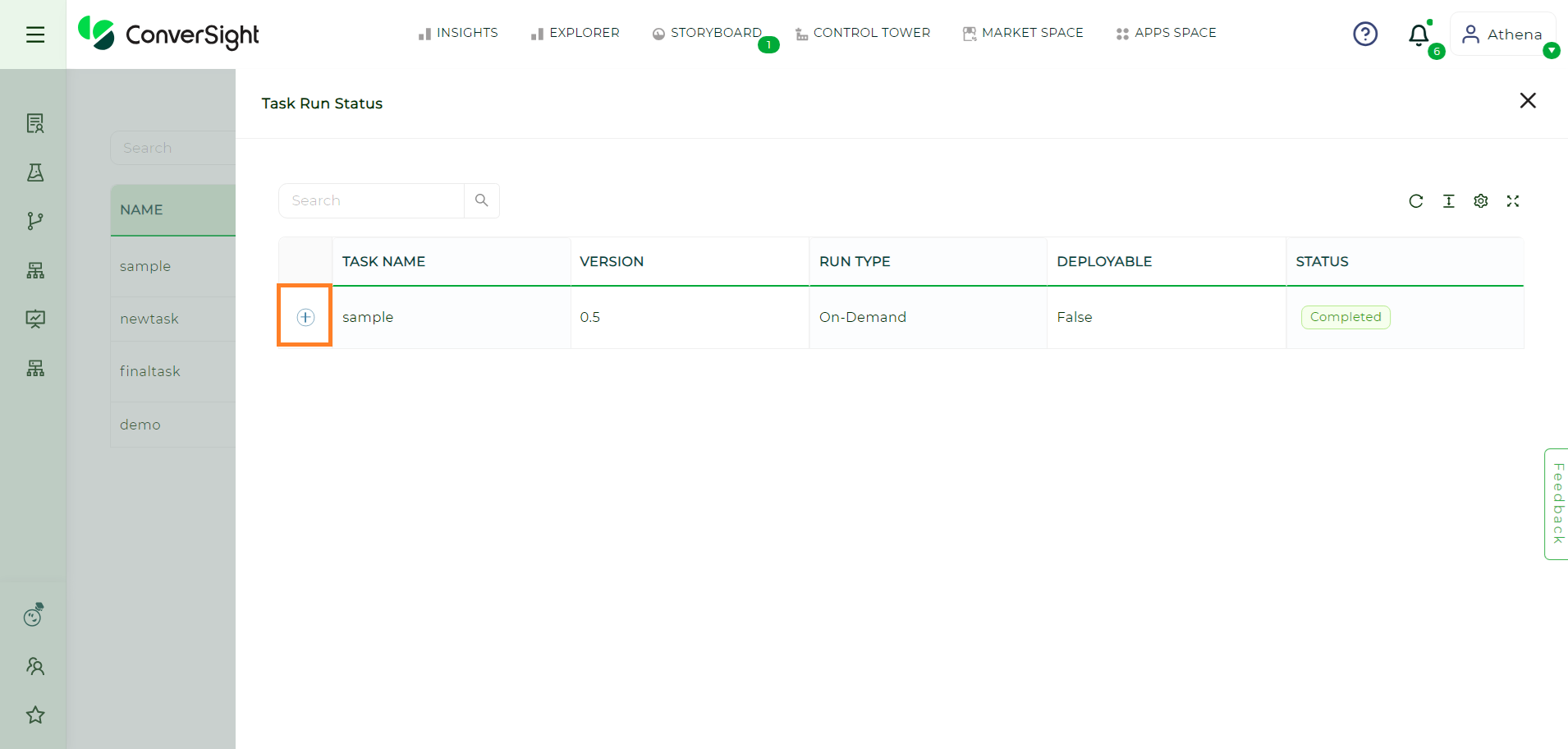
Status#
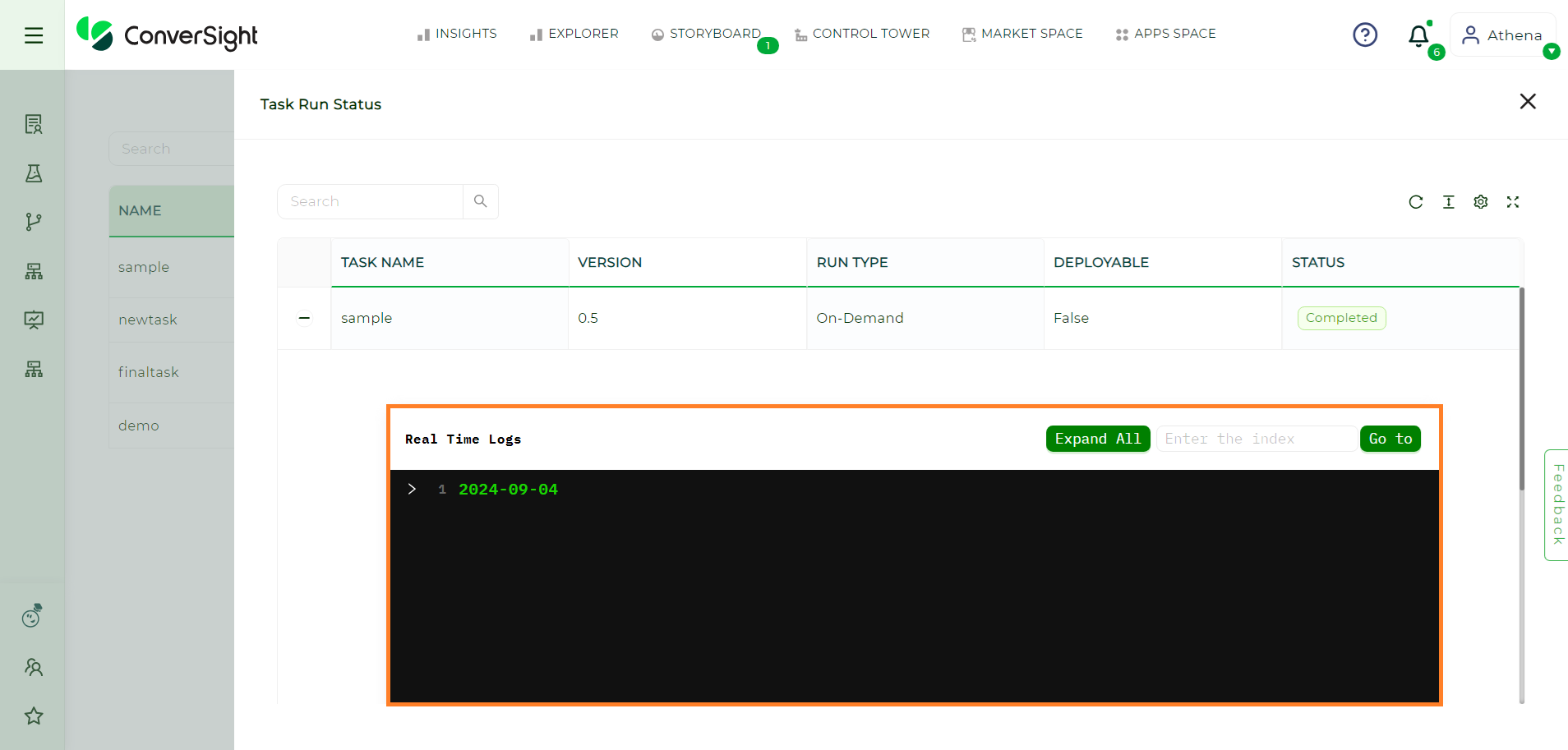
Task Logs#
Users can choose to click on the Expand All button to reveal all logs arranged chronologically, showing the times when the task was executed.
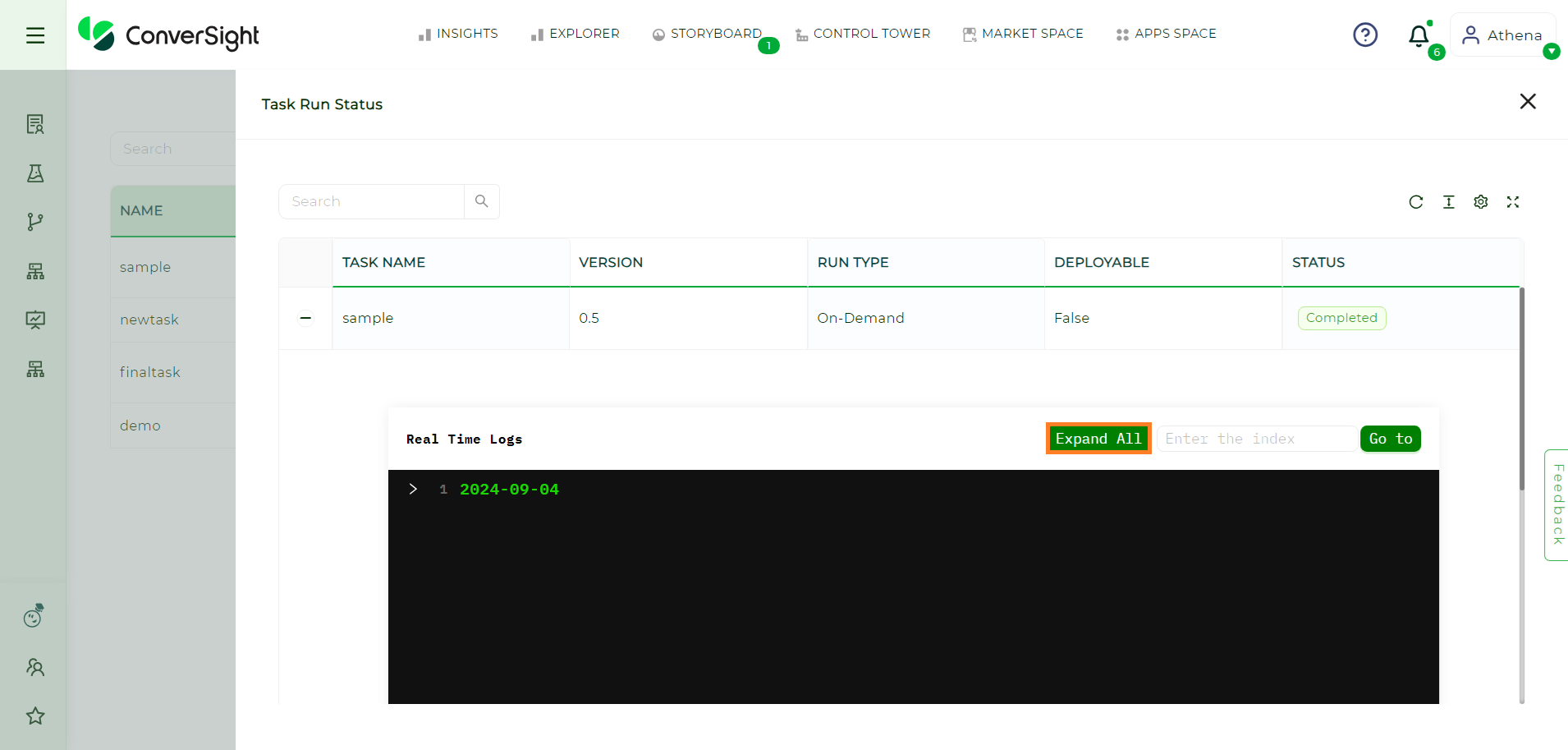
Expand All Button#
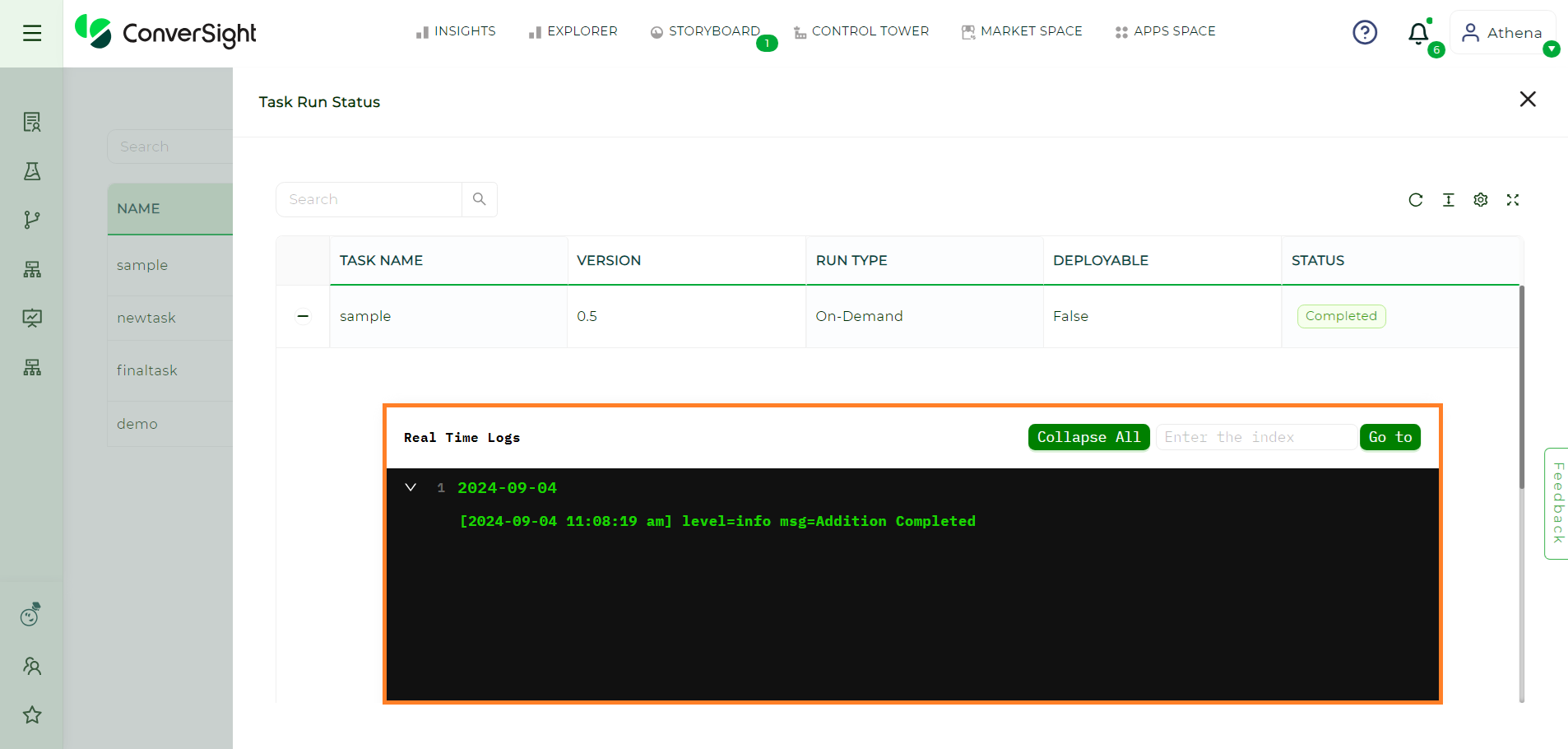
Expand All#
To locate a specific log, input its index number and then select the Go to button for navigation.
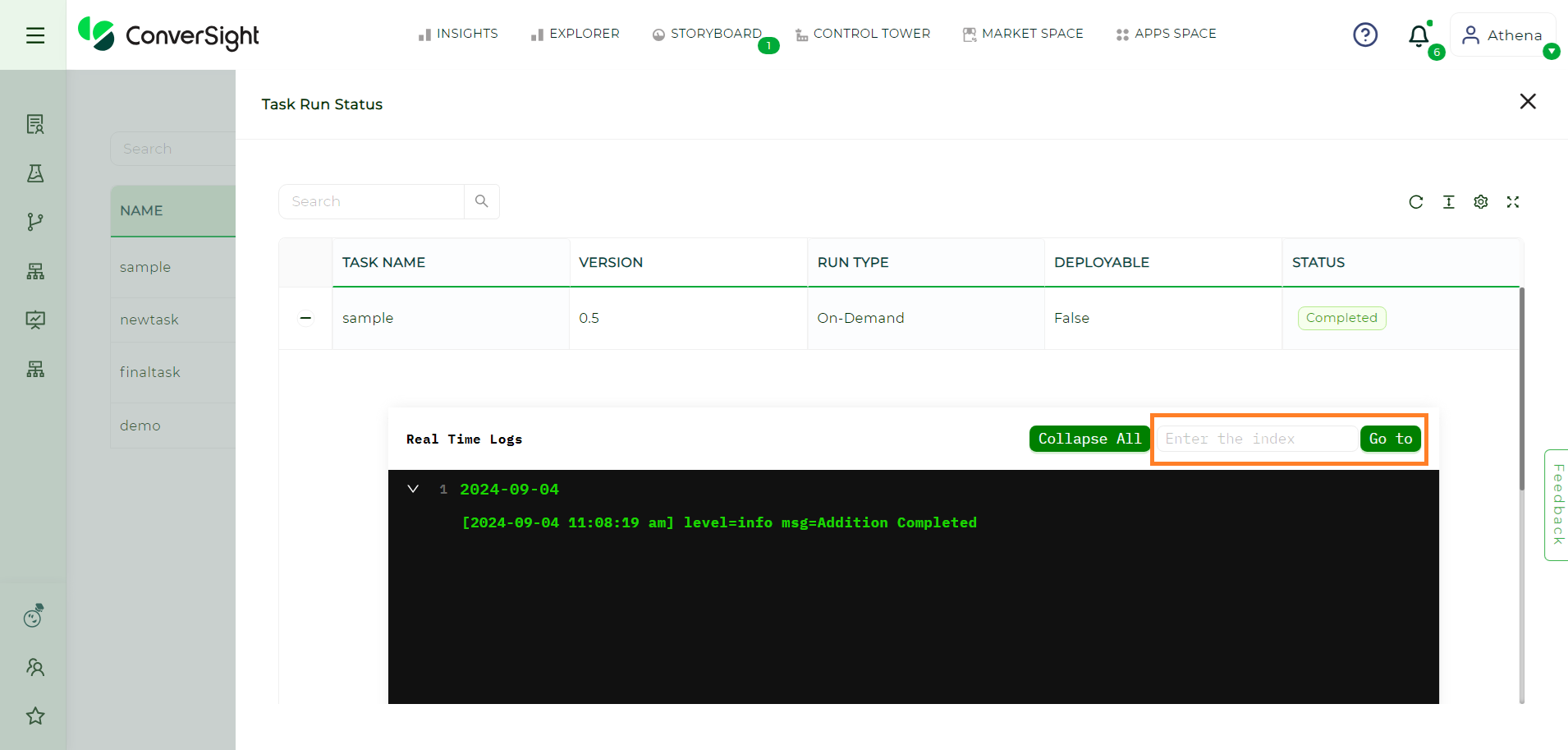
Go To Button#
In conclusion, the Task Management feature in ConverSight’s AI Workbench streamlines task organization and monitoring, offering users a user-friendly interface to efficiently manage created tasks. With centralized access to task details and functionalities such as version control and task promotion, users can optimize productivity. The feature’s comprehensive overview of task-related fields and options for manual task execution and status monitoring enhance workflow efficiency, reducing time consumption and providing a robust platform for effective task management.